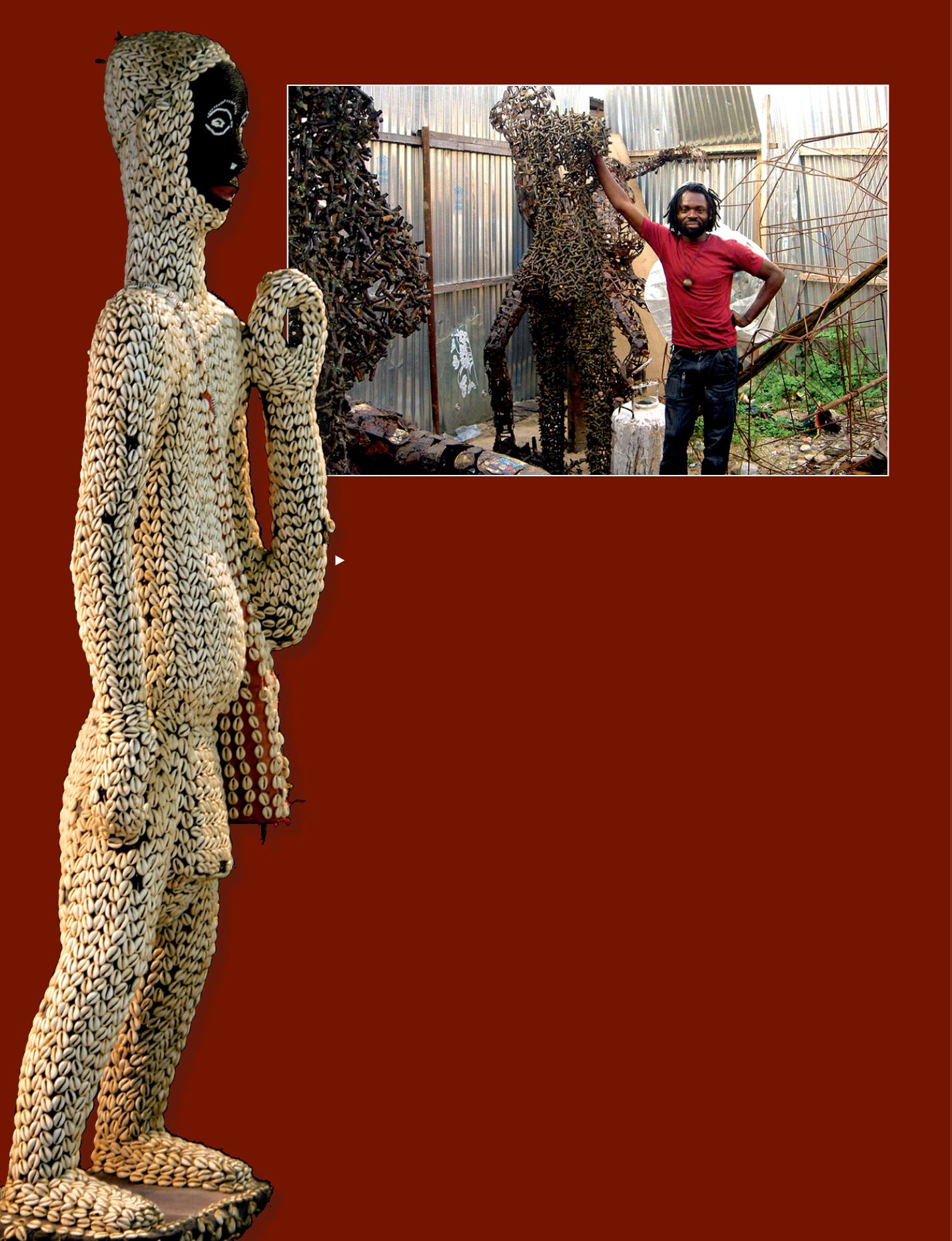
modern art in the westernworld as for
example with the discovery of African
art by the early twentieth century cubist
painters. They were the first to recognise
in disconcerting aesthetics the humanist
values of the sub-Saharan peoples and to
admire the power of the abstraction of this
art, finding stimulation to better go beyond
the naturalistic approach.
Today, this contribution would perhaps be
greater if Africa, the cradle of humanity,
were not experiencing problems in
maintaining its culture. What a lot of
endogenous knowledge is unknown, kept
by persons having sworn to secrecy! What
a lot of experiences of human organisation
that have been little catalogued! What a lot
of witnesses’ accounts and original artistic
expression, the fruit of ‘uneducated’ creative
work, that is being sorely neglected!
Heritage theft and pillaging
Astheyaresoakedinanenvironmentofcultural
ebullition and an abundance of creativeness,
our contemporaries consider that everything
goes without saying: why hang on to copper
Katanga crosses, raffia carpets and wooden
statuettes? Aren’t there still artists and
craftsmen who can make them? This is the
negligence of individuals and governments,
together with the recent abstractions, theft
and pillaging of heritage items during war.
The compiling of an exhaustive inventory of all
the cultural heritage items of the countries of
Africa that should be safeguarded, displayed
and disseminated is overdue.
At the beginning of the second millennium,
which some consider generates fears and
doubts about the future of humans and
the harmonious coexistence of cultures
—O. Spengler’s 1918 notion of the decline of
the West has resurfaced—the use of ancient
African arts by western artists shows that
the crossing of cultures and the comparison
of various expressions in the arts are one of
the best paths to renewal and richness.
We can thus conclude like Louis Michel
that ‘each people has a message that it
can deliver to the world. Each people and
each human being possesses via his or
her culture and his or her positive identity
the means to give humanity the genius of
his or her imagination and creativeness’.
The cultural personality of Africans has
been destructured by the slave trade and
colonisation for six centuries but they cannot
lose their self-confidence as players in their
history. Cheikh Anta Diop invited Africans
to reappropriate their ten thousand years
of history to ‘fertilise our imaginations and
place us in a confident society from which
development emerges’.
c
Pascal Luzala Ngasiala
Institut National des Arts, Kinshasa
The Democratic Republic of the Congo
o
This human-sized Bamiléké sculpture (in wood, cloth,
cowrie shells and small beads) was a personal possession of
King Wembe of the Bana Kingdom in western Cameroon. It
has no religious or ritual function but is just symbolic (power).
James Carlès collection.
© J.D. Dallet/Suds-Concepts
i
Freddy Tsimba was born in 1967 in Kinshasa where he graduated in visual arts, specializing in
monumental sculpture. For this one,
The apostle of disarmament
, he used bullet cartridges he has
collected over more than ten years of war in his native Congo.
© Freedy Tsimba, All rights reserved


